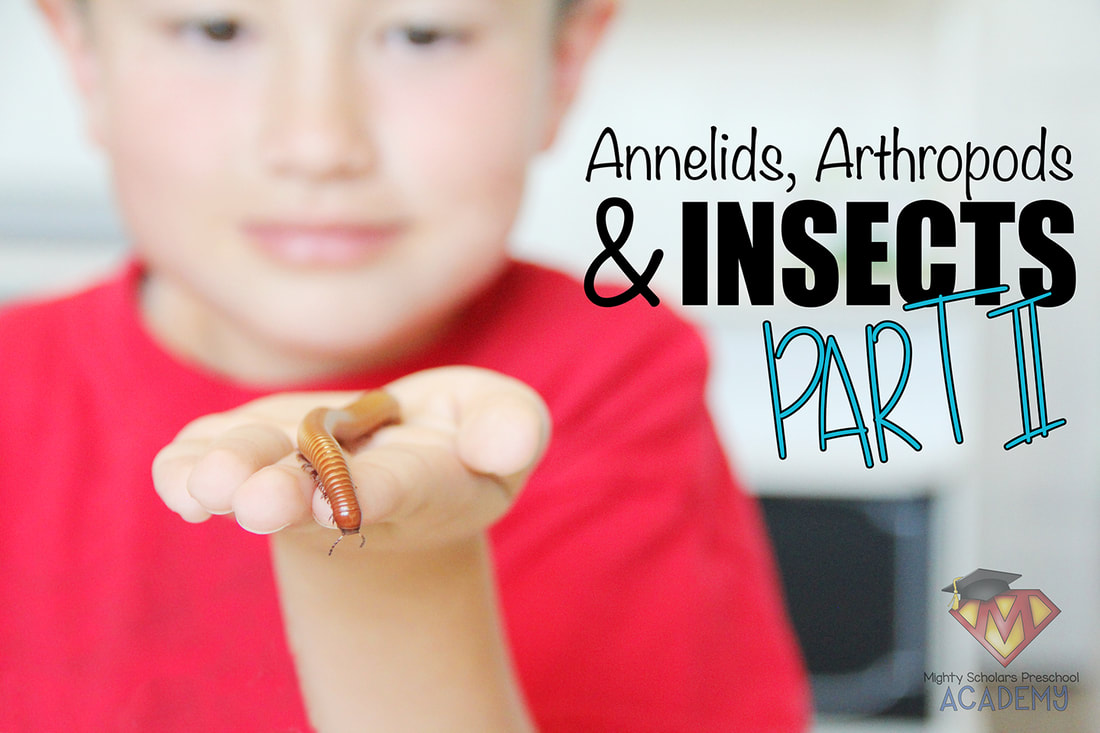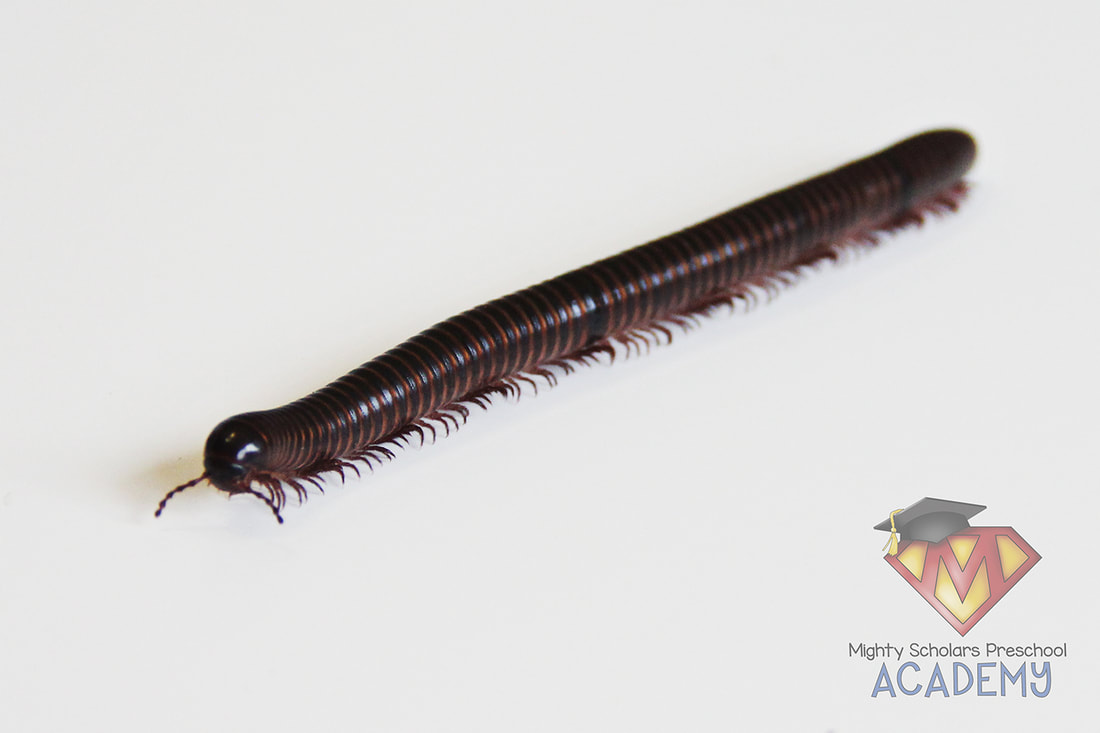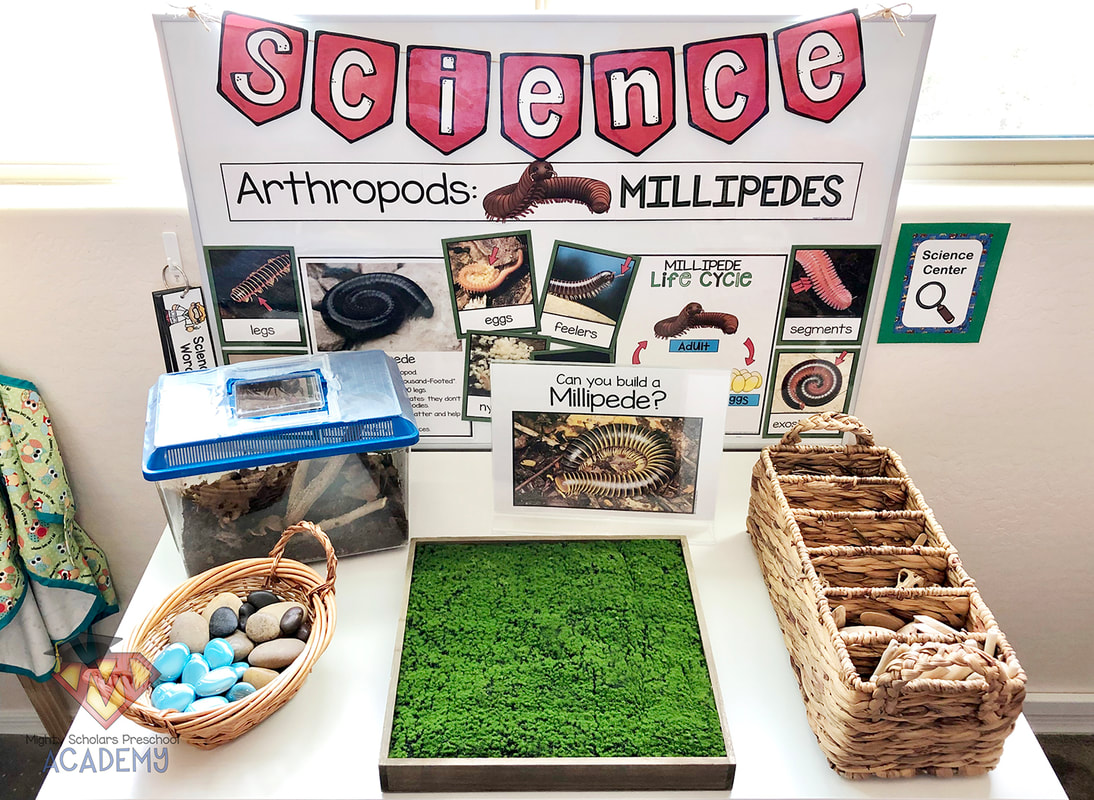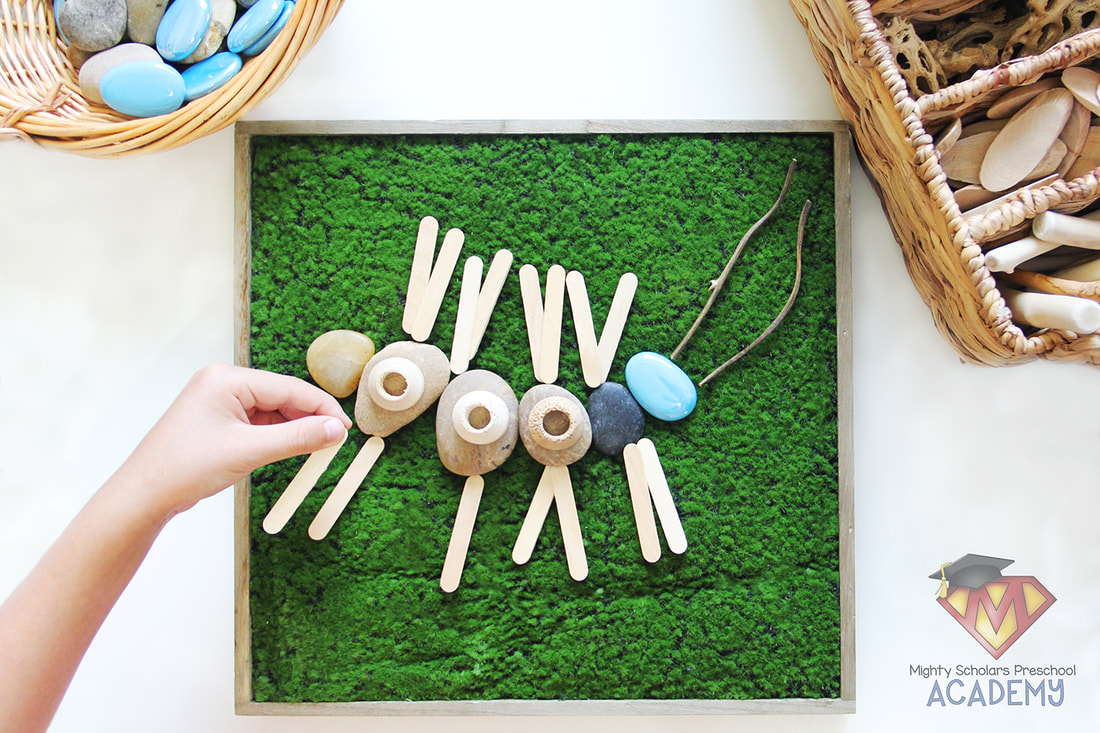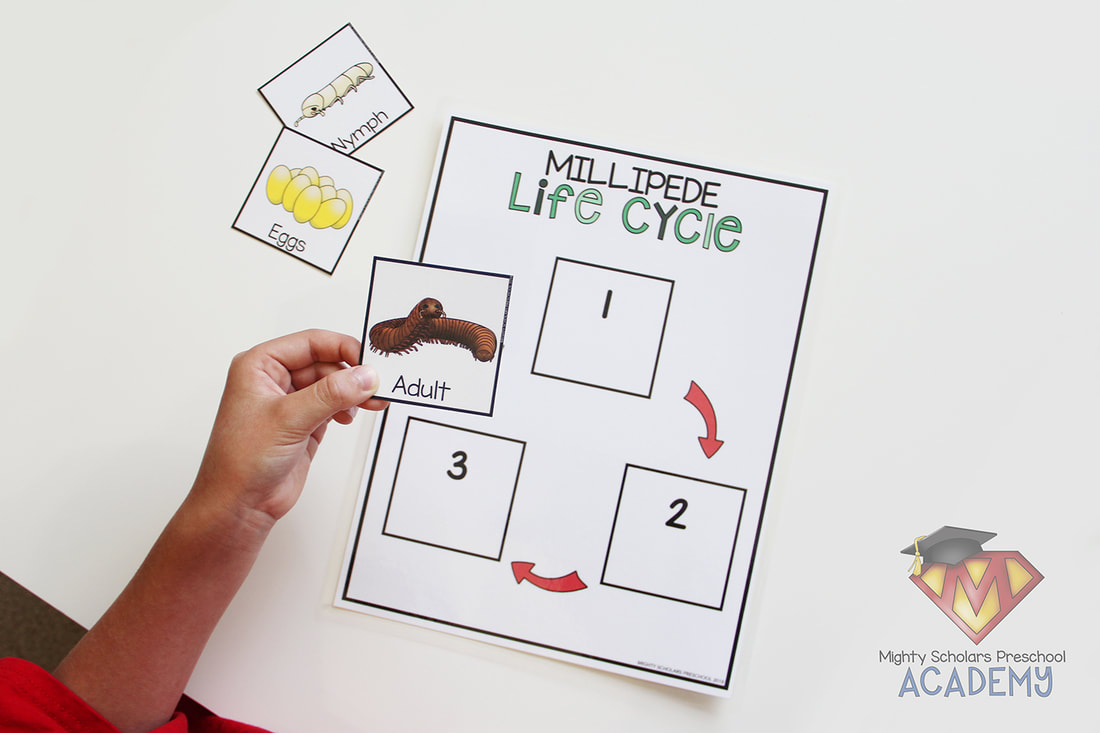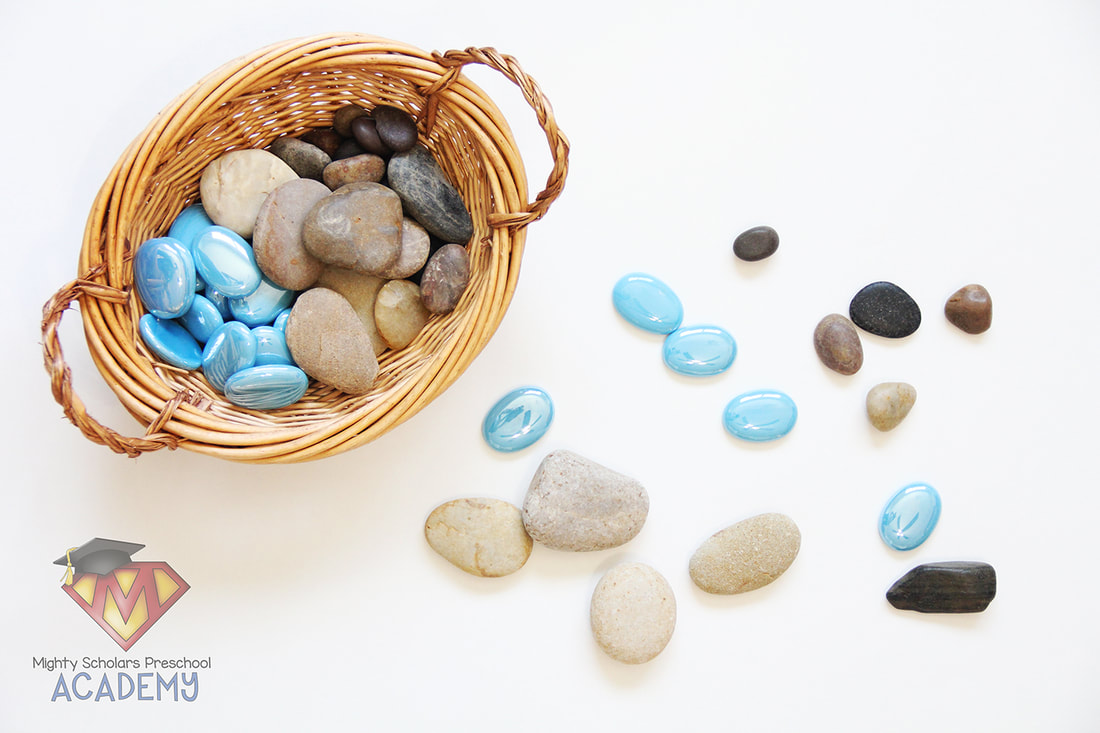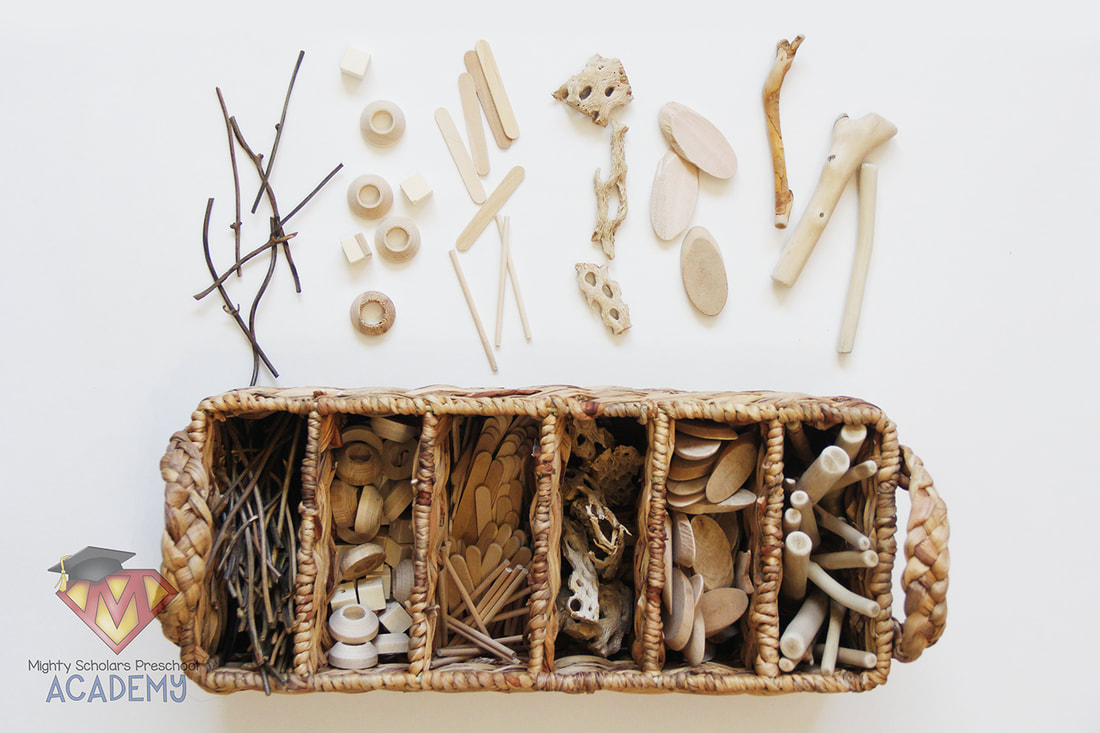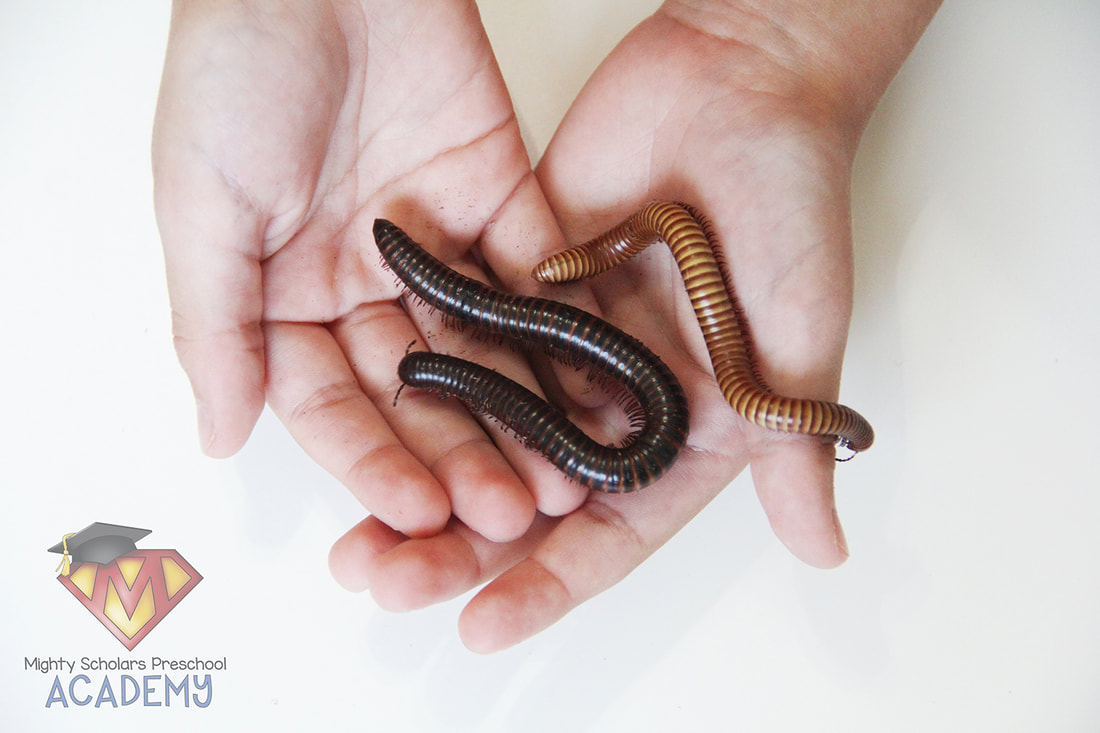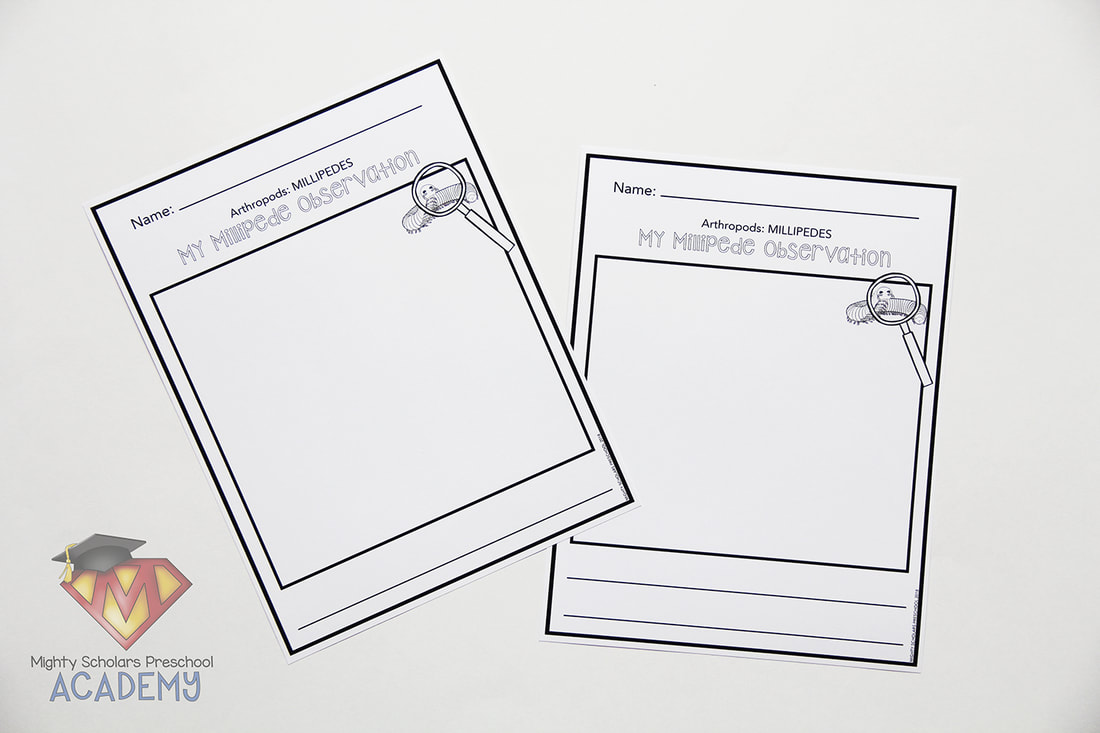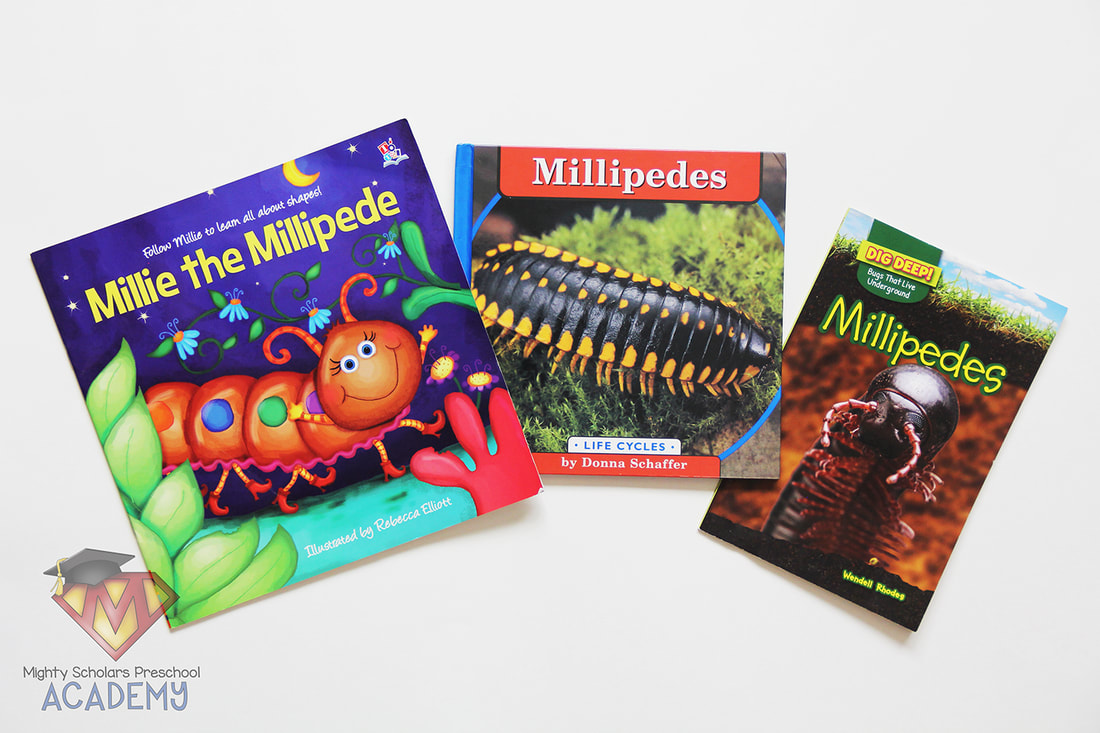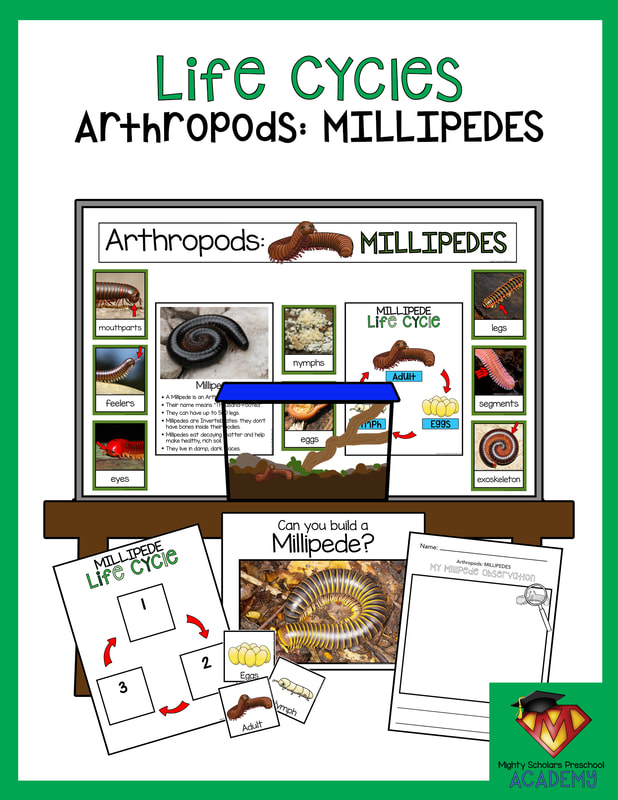|
Arthropods are the next stop on our Spring Life Cycles adventure.
There are many arthropods that teachers can bring into the classroom, including pill bugs and hermit crabs. I like to have something that stands a part from all the other creatures in the classroom and is impactful. Our classroom is host to two giant millipedes named "Eggs" and "Bacon". They make wonderful class pets. As part of the Myriapod order of Arthropods, millipedes are related to crustaceans and go back millions of years.
Our classroom millipedes are fascinating and captivating creatures.
Thankfully, modern day species aren't six feet or longer. However, they do range from less than an inch to over fifteen inches in length, depending on the species. While our class millipedes are only around five inches long, they can grow beyond eight inches. The name "Millipede" means "Thousand-Footed". Millipede legs are impressive, but don't reach a thousand. One of the largest species can have over 250 pairs. When a millipede walks, their legs move in a wave motion, mesmerizing my scholars. Millipedes have two pairs of legs per body segment. They hatch without legs and with each molt, they gain more.
Like earthworms, millipedes are also important macroorganisms in the decomposition world. They also release enzymes through digested food, that nourishes and enriches our soil. They don't however, dig deep down in the ground. They will make shallow burrows in loose, moist soil, under logs or leaf litter.
Look for my blog post on helpful tips for setting up and caring for millipedes in the classroom, following the life cycles unit.
Our Science Center provides an opportunity to discover and create with natural materials.
Since the arthropod portion of our Spring Life Cycles unit follows annelids, and a life cycle matching activity was set out during that time, I chose not to set out the similar activity. The arthropod portion of our unit also offers an open loose-parts challenge. The challenge is to build a millipede, using the natural materials at the center. The challenge card has a large photograph of a millipede in the wild, to serve as inspiration. The facts mini poster and vocabulary cards also help to inspire through real photographs. Both the loose-parts challenge and a life cycles matching activities are included in my Arthropods: Millipedes Life Cycles Science Pack.
Natural materials make some of the best loose-parts.
For this particular activity, I chose a wood tray with moss. Felt sheets or work trays work just as well. I offered quite a few different loose-parts to work with, set in weaved baskets. My loose-parts included: flat skipping rocks in various sizes, large flat irridecent glass gems, drift wood and wood slices, cholla wood pieces, natural sticks, wood discs and squares, thin wooden dowels and short pipcicle sticks. Get creative with the loose-parts you set out. Leaves (fresh or dried), pinecones, acorns, moss rocks and pine-needles are just a few more ideas for natural loose-parts.
Handling a millipede, is an incredible experience.
Just like earthworms, millipedes provide an incredible sensory experience. The wave from their leg movement is unique. My scholars have the opportunity to hold or touch a millipede, observing it closely. I have my students follow the same steps with holding millipedes, as I do with earthworms. While working in a small group, my scholars sit criss-cross on the floor, or sit in chairs at our group table and hold their hands in a cupped shape. If your students don't want to handle a millipede, they can touch it gently with one finger and observe it in your hand. Make sure that your students wash their hands afterwards.
While my scholars are handling and closely observing the millipede, I ask a series of questions:
Recording science observations is important for reflection.
When my scholars have finished handling a millipede and washed their hands thoroughly, they record their close encounter on an observation page. Depending on their level, students may draw and write what they observed, or simply draw a picture. For students who aren't ready to write what they observed, I transcribe what they express about their experience and drawing.
There are only a few books and stories on millipedes, appropriate for preschool aged scholars.
Unfortunately, there is slim pickings, when it comes to children's books on millipedes. There are three that I read and place in my literacy center during our millipede portion of the unit: 'Millipedes (Dig Deep! Bugs That Live Under Ground)' by Wendell Rhodes, 'Millipedes (Life Cycles)' by Donna Schaffer and 'Millie the Millipede' by Erin Ranson. If you know of any additional children's books on millipedes, Please send me an email. I'm always on the lookout for more.
Click below to be taken to the Arthropods: Millipedes Life Cycles Science Pack:
Please note, as a participant in the Amazon Services LLC Associates Program, I may earn a small commission on qualified recommended links.
The Amazon Services LLC Associates Program is an affiliate advertising program designed to provide a means for sites to earn advertising fees by advertising and linking to Amazon.com.
My Amazon Picks for this science unit are:
Comments are closed.
|
Categories
All
©2012–2024 Mighty Scholars Preschool Academy
|

